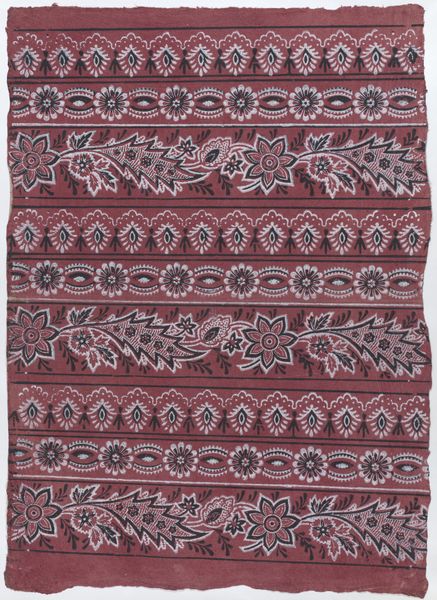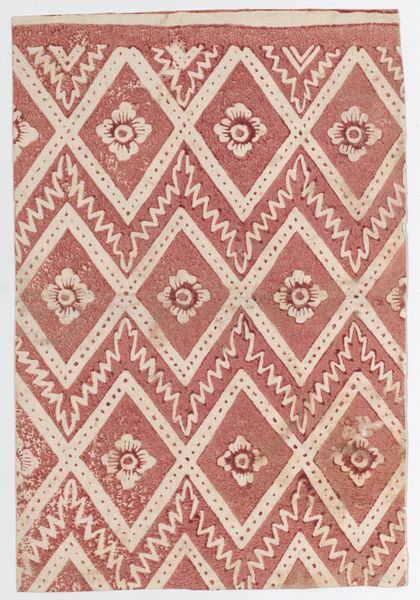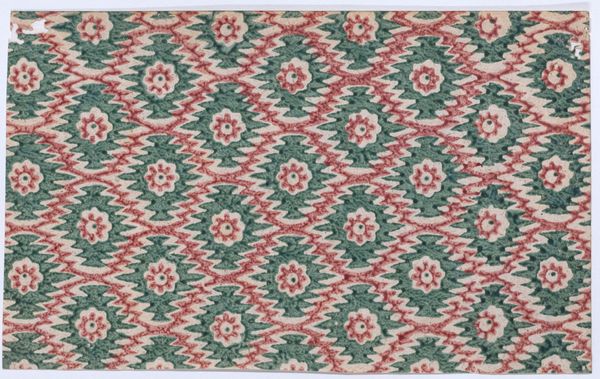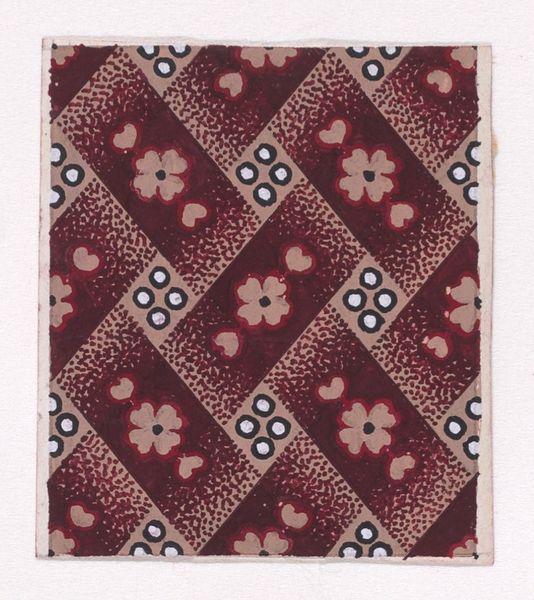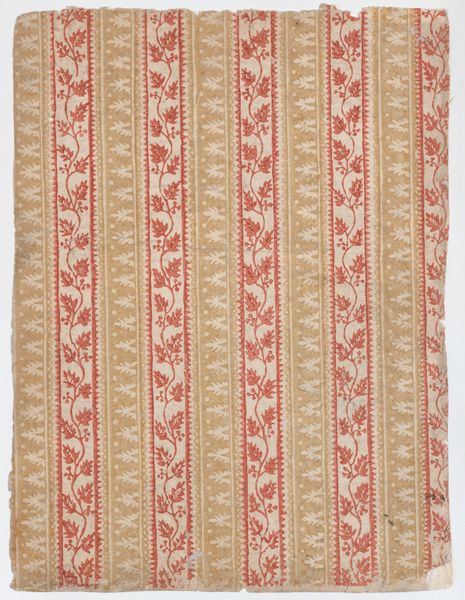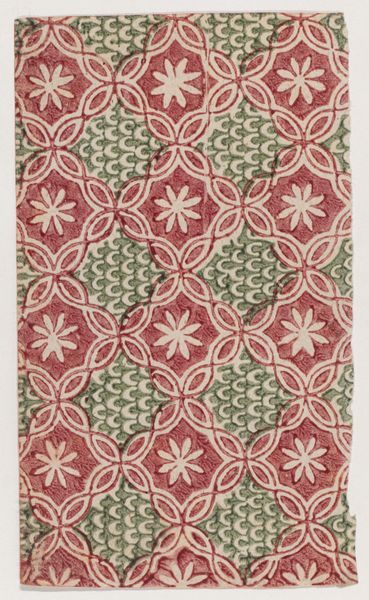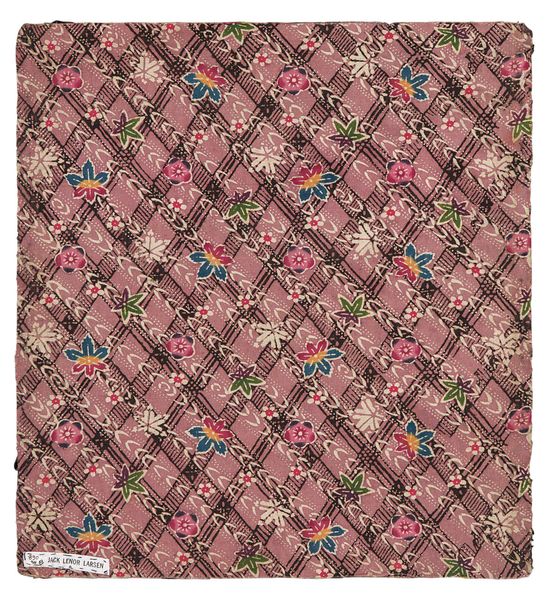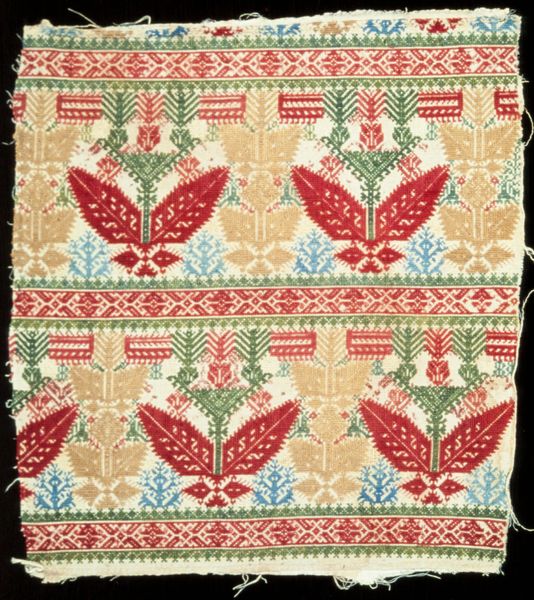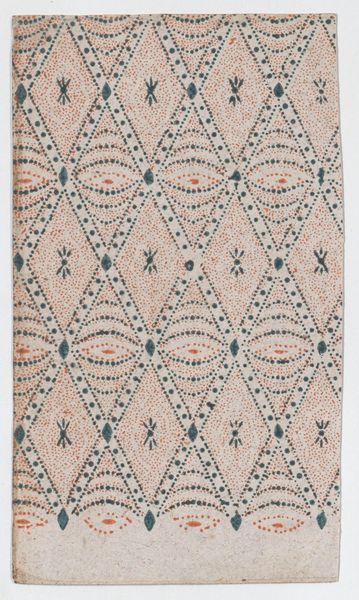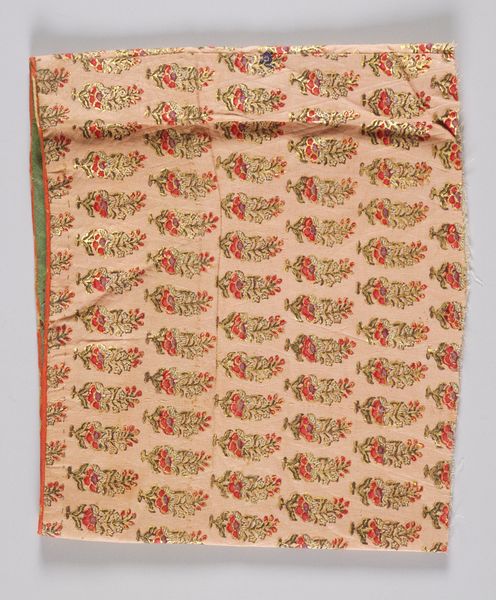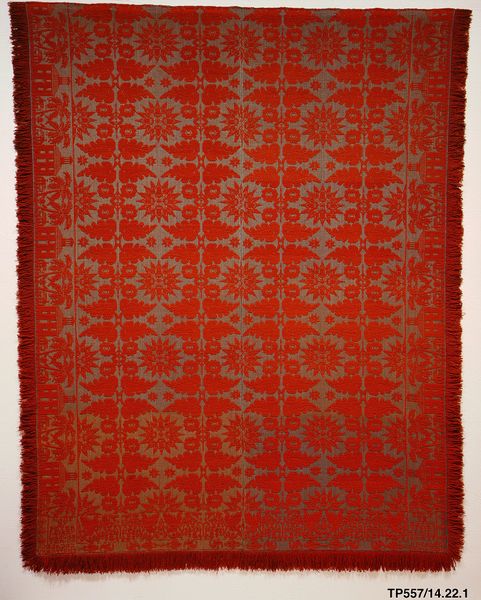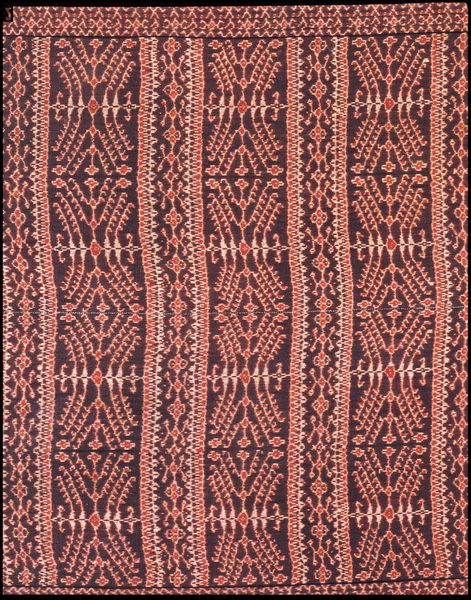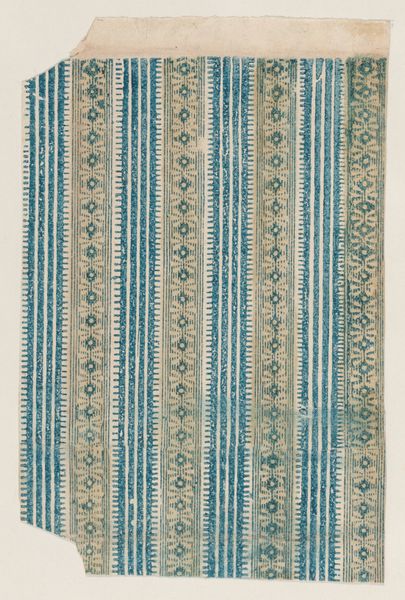
print, paper
# print
#
paper
#
organic pattern
#
geometric
#
decorative-art
Dimensions: Sheet: 4 in. × 2 5/8 in. (10.1 × 6.7 cm)
Copyright: Public Domain
Curator: Well, this strikes me as visually captivating, a piece full of playful repetition. Editor: Indeed. This is an intriguing "Sheet with oval and dot pattern." We believe it dates to sometime between 1800 and 1900. Though the artist remains anonymous, this print and drawing, currently residing at the Metropolitan Museum of Art, really begs us to consider its means of production. Curator: It’s fascinating how a simple, repeating pattern can command such attention. The pink background almost reads like fabric. Do we know what this might have been used for? Editor: Not definitively, but the material strongly suggests a textile sample, perhaps wallpaper or some sort of decorative covering. Think about the world from which this emerged, the growing consumer class, the expansion of choices for furnishing a home… Pattern-making like this had a real economic impact. Curator: Exactly. And the materials themselves— the paper, the pigments – how were these sourced, prepared, and distributed? The labor involved is certainly something to be acknowledged and further researched. The irregularity also speaks volumes. The dots and ovals, they're imperfect. This was clearly a hand-printed item, where the human element is prominent. Editor: Yes, the imperfections really point to the hand of the artisan. But it's more than that: it reminds us that decorative arts weren’t simply 'lesser' forms, but a central component to visual culture. Pattern, decoration, design – they carry complex meanings in social and cultural contexts, especially regarding gender roles of the era. The art's role transcends the merely beautiful. Curator: Agreed. The use of geometric forms alongside these almost organic flower shapes gives it such a striking and rather sophisticated air. Editor: Looking at its time, that geometric design must also have played into emerging social values and design principles and, who knows, maybe someone at the time viewed it in contrast to other works in terms of the changing tastes. Curator: Considering the materials, the context, I find this simple piece so incredibly evocative. Editor: And to consider the hands that designed, crafted, purchased, and perhaps even lived amongst this pattern... it creates quite an extensive set of interesting avenues to explore.
Comments
No comments
Be the first to comment and join the conversation on the ultimate creative platform.
